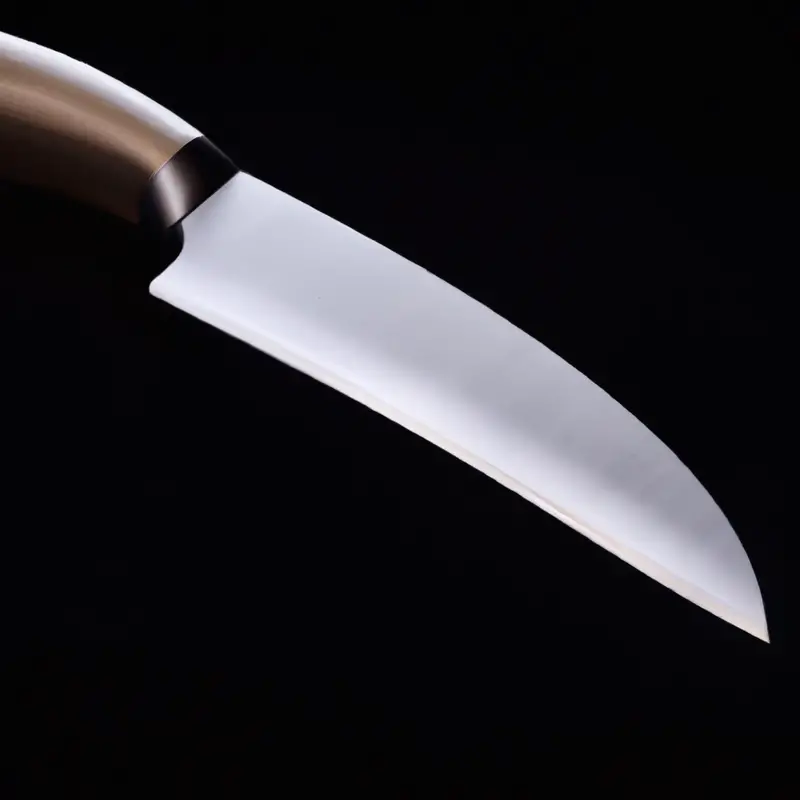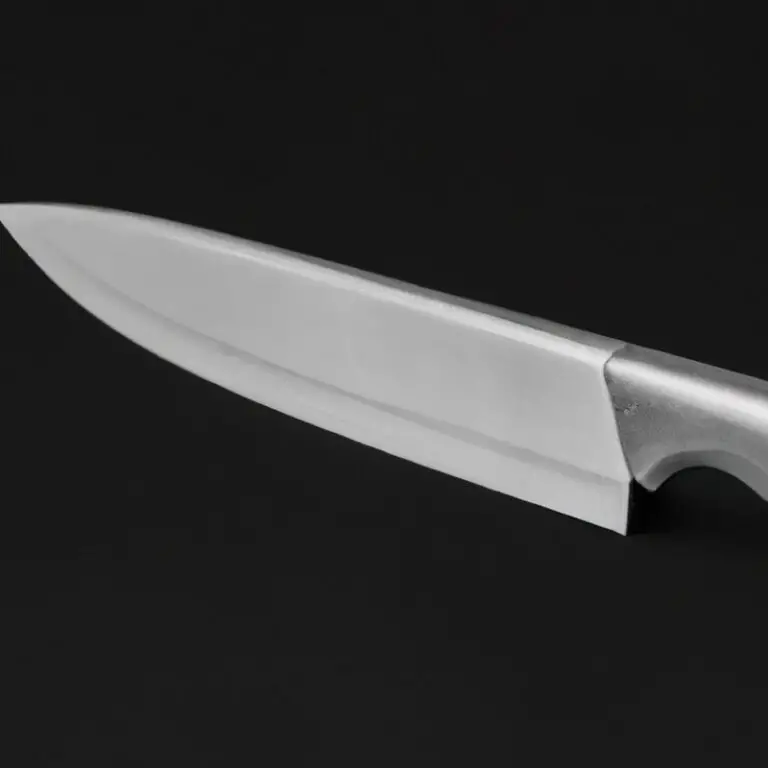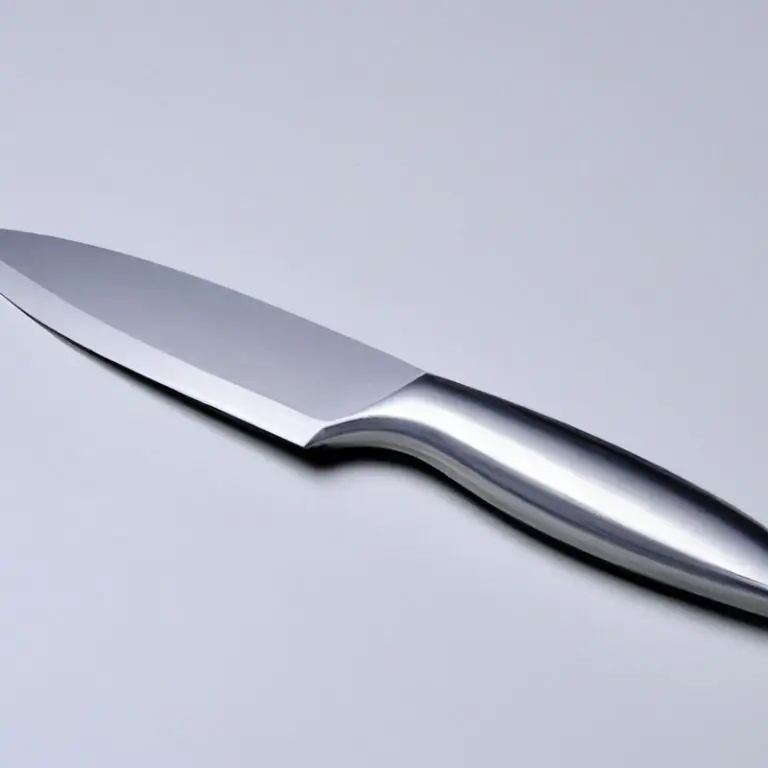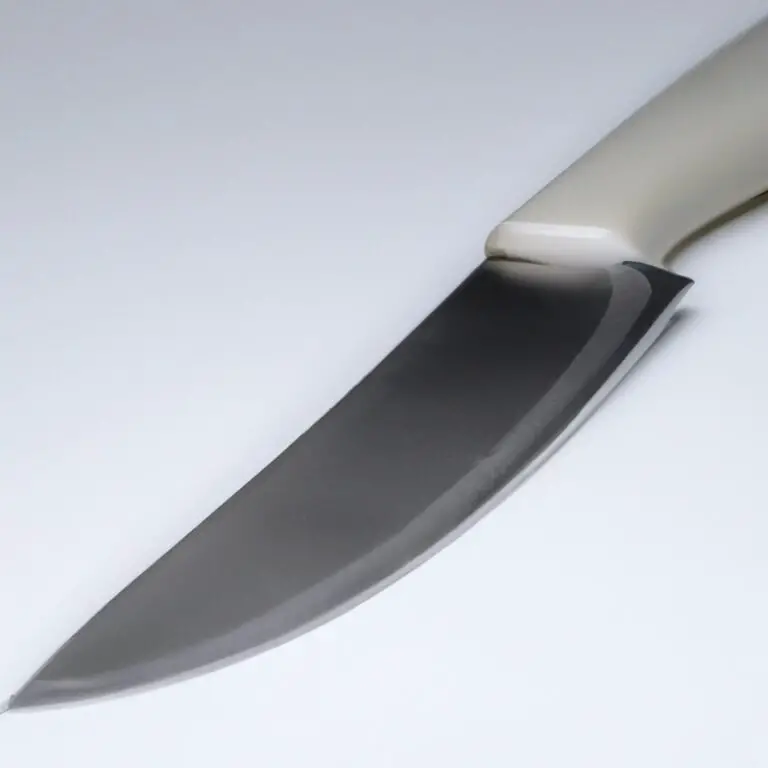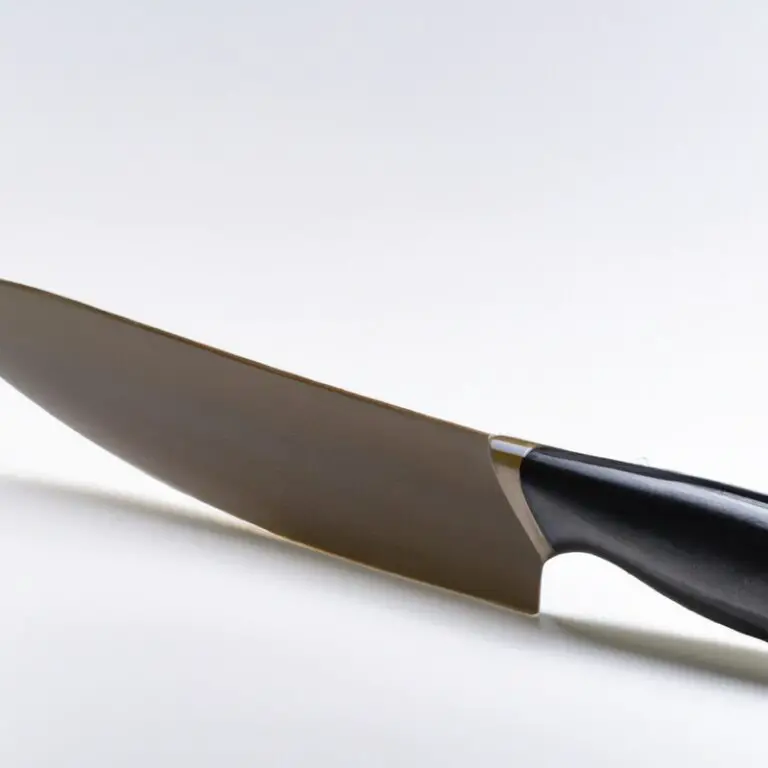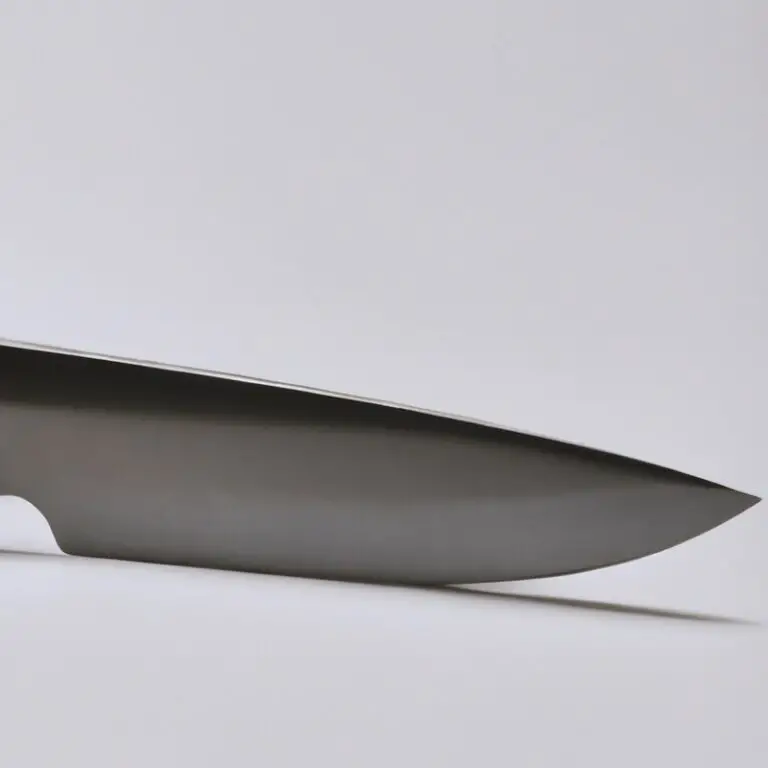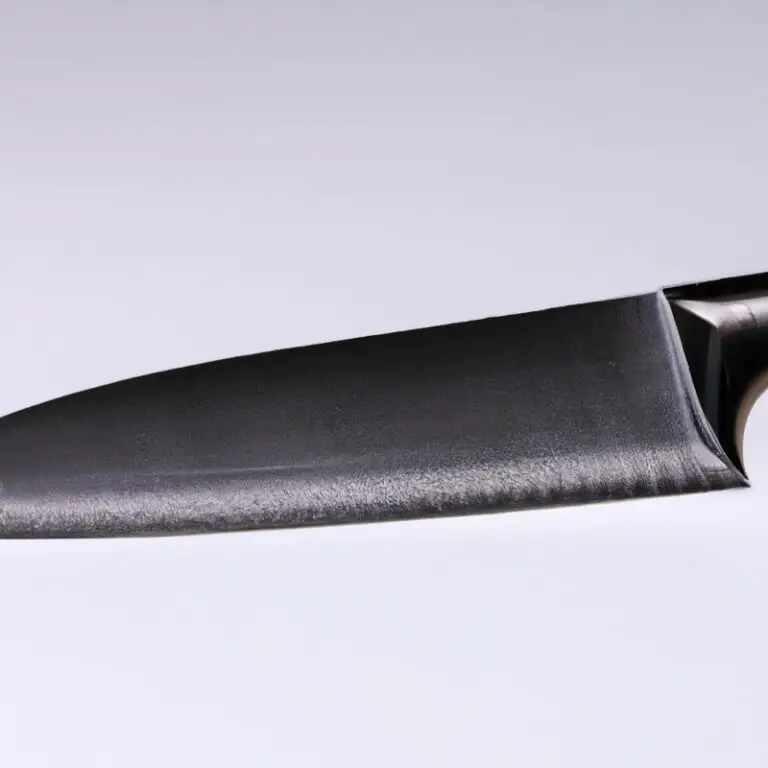Are Santoku Knives Dishwasher-Safe? Explained
Key Takeaways:
- Santoku knives may be dishwasher-safe, but hand-washing is the recommended method to maintain its longevity.
- The high heat and vigorous water pressure in dishwashers can damage the blade and handle of Santoku knives.
- Dishwasher-safe labels on Santoku knives indicate that they are resistant to dishwasher damage but follow the manufacturer’s instructions for care.
- Investing in a good-quality knife sharpener and honing the blade regularly can also extend the lifespan of your Santoku knife.
Are you tired of hand-washing your Santoku knife after every use? You may be tempted to throw it in the dishwasher to make your life a little easier, but is it safe to do so?
As a professional chef, I’ve seen the damage that dishwasher detergent can do to high-quality knives.
In this article, we’ll dive into the pros and cons of dishwasher-safe knives, whether Santoku knives are dishwasher-safe, and how to properly maintain and clean your Santoku knife to ensure its longevity. Let’s explore the best practices for keeping your Santoku knife in top condition.
Understanding Santoku Knives: What Sets them Apart from Other Knives?
Santoku knives originated in Japan and have become increasingly popular in Western kitchens. Unlike traditional Western-style knives, Santoku knives have a shorter and wider blade, which makes them more versatile for slicing, dicing, and chopping.
They are also lightweight and have a hollow edge that reduces friction during cutting, resulting in smoother and more precise cuts.
Another feature that sets Santoku knives apart from other knives is their unique shape, which allows for a rocking motion when cutting. This motion is particularly useful for cutting vegetables and herbs, making Santoku knives a popular choice for chefs and home cooks alike.
Overall, Santoku knives offer a combination of precision, versatility, and ease of use that make them a valuable addition to any kitchen.
The Pros and Cons of Dishwasher-Safe Knives
Pros:
- Convenience – Dishwasher-safe knives are easy to clean and save time since they can be put in the dishwasher with your other dishes.
- Water temperature – Dishwashers can heat water to a temperature that is hotter than what the average person can use while hand-washing.
- Sanitization – The high heat and detergent used in dishwashers can sanitize and kill germs that may be left on the knife after hand-washing.
Cons:
- Dulling – The high heat and water pressure in dishwashers can damage the blades of knives, resulting in dullness and damage to the edge.
- Corrosion – Some dishwasher detergents are corrosive, which can cause rust and discoloration on the blade.
- Handle damage – Dishwasher-safe knives may have handles made of materials that don’t hold up well under the high heat and water pressure, leading to cracks, fading, or other kinds of damage.
Conclusion: Although dishwasher-safe knives offer convenience and sanitization, the potential damage that the blades and handles can sustain outweighs the benefits. It’s best to hand-wash knives with mild detergent, water, and a soft sponge, and then dry them thoroughly to increase their longevity.
Can Santoku Knives be Washed in a Dishwasher?
Santoku knives can be washed in a dishwasher, but it is not recommended. The high-pressure water jets and harsh dishwasher detergents can damage the knife’s blade and handle material, shortening its lifespan.
Additionally, the high temperature of the dishwasher can cause the blade to warp or lose its sharpness.
It is best to hand wash Santoku knives with warm water and mild dish soap, followed by thorough drying with a soft towel. This will keep your Santoku knife in optimal condition.
The Effect of Dishwasher Detergents on Santoku Knife Blades
Dishwasher detergents can have a detrimental effect on Santoku knife blades. The high heat and strong chemicals used in dishwashers can cause the steel to corrode and become dull over time.
Abrasive detergents can also scratch the blade surface, leading to more rapid wear and tear.
To keep your Santoku knife blades in optimal condition, it is recommended to hand wash them using mild detergent and warm water. Avoid soaking the blades for long periods and always dry them thoroughly after washing to prevent rust or corrosion.
Tips for Proper Maintenance of Santoku Knives
Proper maintenance of Santoku knives is essential to ensure their longevity and optimal performance. Here are some tips for taking care of your Santoku knife:
- Hand wash your knife immediately after use with gentle dish soap and warm water. Do not let it soak in water or place it in the dishwasher.
- Dry the knife thoroughly with a soft towel or cloth to prevent rust from forming.
- Store the knife in a knife block or protective sleeve to avoid damage to the blade or cutting edge.
- Sharpen the blade regularly with a sharpening stone or honing rod as needed to maintain its sharpness.
- Avoid using abrasive sponges or cleaning agents that can scratch the blade or handle of the knife.
- Do not use your Santoku knife to cut hard foods or frozen items that can damage the blade.
- Consider oiling the blade periodically to prevent rust and oxidation.
By following these simple tips, you can ensure that your Santoku knife stays sharp and in top condition for years to come.
How to Clean Santoku Knives Safely Without Damaging the Blade
To clean a Santoku knife safely without damaging the blade, it is best to hand wash it with warm water and mild dish soap. Avoid using abrasive sponges or cleansers that can leave scratches on the blade.
After washing, rinse the knife thoroughly and dry it immediately with a soft cloth to prevent rust.
Always store the knife in a protective sheath or on a magnetic rack away from other kitchen utensils. Never soak the knife or leave it wet for extended periods of time, as this can cause damage to the blade and handle.
With proper care, your Santoku knife can remain sharp and functional for years to come.
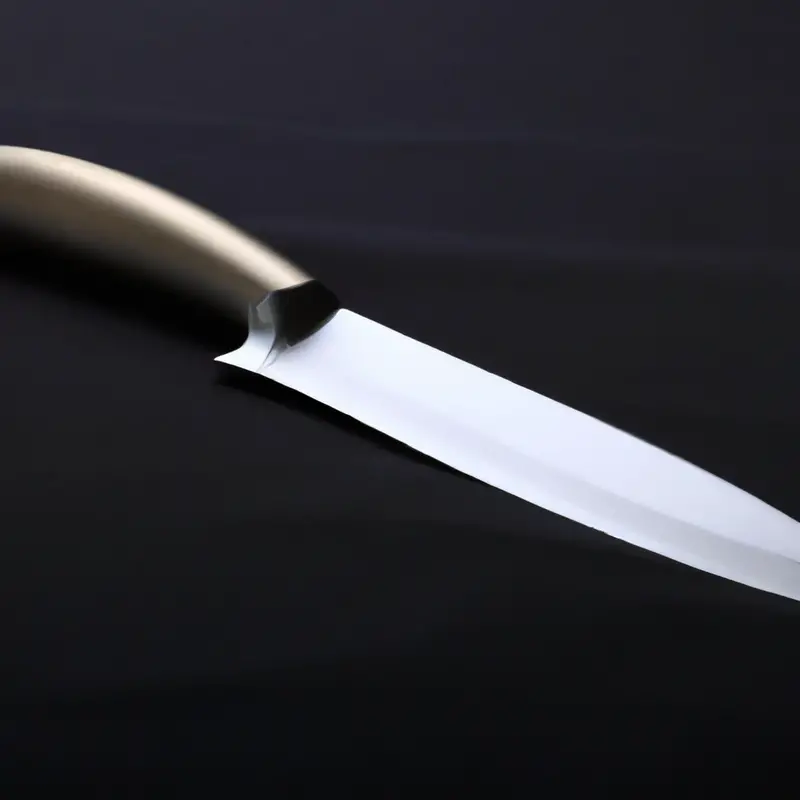
Common Mistakes to Avoid When Washing Santoku Knives
Avoid these common mistakes when washing Santoku knives to keep them in top condition:
- Don’t use abrasive sponges or scouring pads as they can scratch and damage the blade.
- Avoid using harsh detergents or bleach as they can corrode the blade and handle.
- Don’t soak the knife in water for an extended period as it can cause rust spots on the blade.
- Avoid leaving the knife wet or damp, as it can lead to rust formation.
- Never put a Santoku knife in the dishwasher, as the harsh detergents and high heat can damage the blade and handle.
By avoiding these common errors, you can enjoy the lasting performance of your Santoku knife for years to come. Remember to always hand wash your knife using a mild detergent, rinse thoroughly, and dry immediately.
The Impact of Dishwashing on Santoku Knife Handle Materials
Dishwashing can have a detrimental impact on the materials used for the handle of Santoku knives. Most Santoku knife handles are made of wood, plastic, or a combination of both.
When subjected to the high heat of a dishwasher, these materials can warp, crack, or even melt.
In addition, harsh detergents and abrasives used in dishwashers can cause the handle materials to deteriorate over time. To preserve the longevity and appearance of your Santoku knife, it is recommended to hand wash and dry the knife after each use.
If necessary, use a mild dish soap and a soft cloth or sponge to gently clean the handle.
Avoid soaking the knife in water or using abrasive cleaning tools that can damage the handle materials. In addition, storing the knife in a protective sheath or knife block can help prevent damage to both the blade and handle.
How to Store and Protect Your Santoku Knives from Damage
To store and protect your Santoku knives from damage, avoid throwing them in a drawer with other utensils or leaving them unprotected on a countertop. Instead, consider investing in a knife block or magnetic strip to keep your knife blades separate and secure.
You can also opt for individual knife protectors or sheaths for extra protection.
Make sure to place your Santoku knives in their designated storage location after each use, ensuring the blades are dry and free of any dirt or debris. Avoid stacking knives on top of each other or bending the blades, as this can cause damage and affect the knife’s performance.
Proper storage can significantly increase the lifespan of your Santoku knives and ensure they remain in excellent working condition.
Alternative Cleaning Methods for Santoku Knives: Which Ones are Safe?
While washing Santoku knives in the dishwasher is not recommended, there are alternative cleaning methods that are safe and effective in maintaining their quality. Hand washing with warm water and mild dish soap is the most common and safest method.
You can also use a sponge or soft-bristled brush to clean the blade.
Another alternative cleaning method is using a solution of equal parts vinegar and water to wipe down the blade. This helps remove any tough stains or odors.
Some also recommend using baking soda mixed with water as a paste to clean the blade.
However, it’s important to rinse and dry the blade thoroughly after using any alternative cleaning method to prevent rusting. Avoid using harsh abrasives, steel wool, or any metal scouring pads as they can scratch and damage the blade.
Additionally, be careful not to soak the knife in water for too long, as moisture can lead to rust formation.
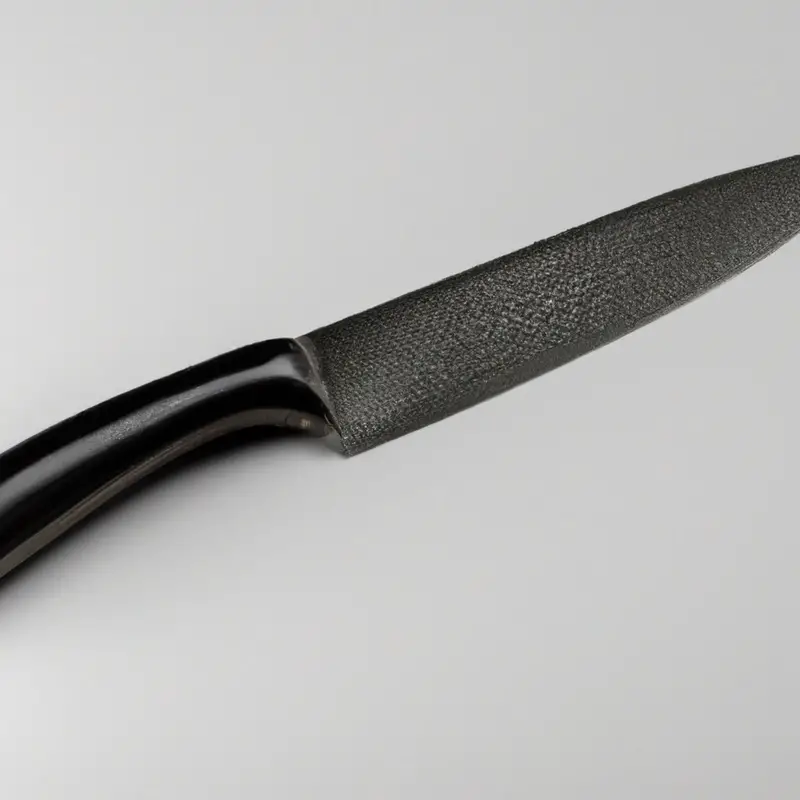
How to Tell If Your Santoku Knife Needs Professional Sharpening
It’s important to keep your Santoku knife sharp for optimal performance. Here are some signs that indicate you might need professional sharpening:
- Dullness: If your knife is not slicing through food as easily as it used to, it’s a clear indication that it’s time for sharpening.
- Difficulty in cutting: If you find yourself applying a lot of force while slicing or chopping, it’s a sign that your blade has lost its sharpness.
- Uneven cutting: A blade that has been dulled or damaged will not be able to make clean and even cuts, leaving you with uneven food pieces.
- Increased Slipping: A sharp knife will grip the food and cut through it easily. If you notice that the knife slips while carving, it’s an indication that the blade needs sharpening.
- Damage: If you notice any chips or nicks in the blade, it’s best to have it inspected by a professional. Sharpening a damaged blade could lead to further damage.
It’s recommended that you take your Santoku knife for professional sharpening at least once a year to maintain its quality and performance. Don’t wait until it’s too late, protect your investment and sharpen your blades routinely.
When is it Time to Replace Your Santoku Knife?
As with any kitchen tool, Santoku knives have a limited lifespan. It’s important to know when it’s time to replace your Santoku knife to avoid using a dull or damaged blade that could result in injury or unsatisfactory results.
Some signs that indicate it’s time to replace your Santoku knife include:
- Dull or damaged blade: If your knife struggles to cut through basic ingredients or has nicks or chips in the blade, it’s time to replace it. A dull or damaged blade can make cooking tedious and unsafe.
- Loose handle or rust: If the handle is loose or the blade is rusted, it’s time to retire your knife. Loose handles compromise the safety and stability of the blade, while rust will make your knife unusable and unsanitary.
- Wear and Tear: Over time, the blade of your Santoku knife may become thinner and eventually lose its balance, strength, and overall quality. Age and frequency of use can also make a blade more vulnerable to twisting or breaking under pressure.
It’s recommended to invest in new knives every 2-3 years, depending on how frequently you use them and the quality of the knife. It’s a worthwhile investment for your cooking abilities and safety in the kitchen.
Why Hand Washing is the Best Way to Clean Your Santoku Knife
Hand washing is the best way to clean your Santoku knife because it helps to preserve the quality and sharpness of the blade. Dishwashers use high heat, powerful water jets, and harsh detergents that can damage the knife blade over time.
The blade can become dull, develop nicks and scratches, and even corrode in extreme cases if exposed to dishwasher detergents.
To ensure the longevity of your Santoku knife, it is best to hand wash it with warm water and mild dish soap after each use. Use a soft sponge or cloth to gently scrub the blade to remove any food particles or debris.
Avoid using abrasive cleaners or scrubbing pads as they can scratch the surface of the blade.
After washing, rinse the knife thoroughly under running water and dry it immediately with a clean towel. Avoid air drying as it can lead to rust formation on the blade.
Once dry, store the knife in a sheath or place it in a knife block to protect the blade and prevent accidents.
In summary, hand washing your Santoku knife is the best way to ensure its longevity, sharpness, and quality. It only takes a few minutes, but the benefits are worth the effort.
Choosing the Right Dish Soap for Cleaning Santoku Knives
When it comes to choosing the right dish soap for cleaning Santoku knives, it’s important to opt for a mild and gentle detergent. Harsh dish soaps with strong chemicals can damage the blade’s edge and even erode the metal over time.
Look for a soap that is specifically designed for delicate dishes or one that is labeled as “gentle” or “mild.” Additionally, avoid using dish soaps that contain bleach, as this can also damage the blade.
Opt for a natural or organic dish soap, free from harsh synthetic fragrances or dyes. When cleaning your Santoku knife, remember to use lukewarm water and avoid soaking it for extended periods.
Rinse the blade thoroughly and dry it immediately after cleaning to prevent rust and corrosion.
How Often Should You Clean Your Santoku Knife?
It is recommended to clean your Santoku knife after every use to maintain its sharpness and prevent the accumulation of bacteria. Even if the knife appears clean, there may be unseen residues or food particles that can cause corrosion or contamination.
To clean your knife, use warm soapy water and a sponge or cloth, and rinse thoroughly with water.
Avoid using abrasive materials or harsh chemicals that can damage the blade. After cleaning, dry the knife immediately with a soft towel to prevent rusting and store it in a safe place away from other utensils that may scratch or dull the blade.
By cleaning your Santoku knife after each use, you can ensure its longevity and performance.
The Importance of Drying Your Santoku Knife Thoroughly After Cleaning
The importance of drying your Santoku knife thoroughly after cleaning cannot be overstated. By leaving your knife wet, you are exposing it to moisture which can lead to rust and corrosion.
This can compromise the blade’s sharpness, durability, and even its safety.
Drying your knife thoroughly after cleaning should become part of your kitchen routine. After washing, use a dry towel to remove the excess water from the blade and handle.
Then, let the knife air dry for a few minutes to ensure that all of the moisture has evaporated.
Once it is completely dry, you can store it back in its sheath or block. Avoid putting your Santoku knife away while it is still wet, as this can create a breeding ground for bacteria that can affect the quality of your food.
Not only that, but moisture can also seep into the handle, causing wood to swell, or damage the adhesive that holds the tang in place.
In summary, drying your Santoku knife thoroughly after cleaning is essential for ensuring its longevity, sharpness, and safety. By taking a few extra seconds to dry it off, you can protect your investment and ensure you get the most out of your knife for years to come.
Can You Use Oil on Santoku Knives to Prevent Rust?
Yes, you can use oil on Santoku knives to prevent rust. Applying a thin coat of oil on the blade after each use can help inhibit rust formation.
It is recommended to use food-grade oil, such as mineral oil, camellia oil, or vegetable oil.
Be sure to wipe off any excess oil to avoid a sticky blade. Do not use olive oil, as it can leave a bad taste and odor on the blade.
It is important to note that using oil on the blade may not be necessary if your Santoku knife is made of high-quality stainless steel, which is already resistant to rust.
The Impact of Dishwasher-Safe Claims on Santoku Knife Durability
While some Santoku knives may claim to be dishwasher-safe, experts recommend against using a dishwasher for cleaning knives. The high water pressure, heat, and harsh detergents used in dishwashers can damage the blade and handle of Santoku knives, ultimately reducing their durability.
The high heat can cause the blade to warp, while the harsh detergents can cause the blade to become discolored or corroded.
Furthermore, the agitation caused by the water and dishes can cause the knives to knock against other objects, damaging the blade’s edge. To ensure the longevity and durability of your Santoku knives, it is best to hand wash them with mild dish soap and dry them thoroughly after each use.
Other Factors to Consider When Selecting a Santoku Knife
Apart from dishwasher safety, there are several other factors that are worth considering when choosing a Santoku knife.
- Blade Material: The most common blade materials are stainless steel and high carbon steel. Stainless steel is more rust-resistant and requires less maintenance, while high carbon steel sharpens more easily and holds a sharper edge for longer.
- Blade Length: Santoku knives typically come in blade lengths of 5-8 inches. Consider your intended use and hand size when choosing the appropriate blade length.
- Blade Thickness: A thinner blade provides more precision and control, while a thicker blade is more durable and versatile.
- Blade Grind: The two main blade grinds are flat and hollow. A flat grind creates a sharp edge for precision cutting, while a hollow grind creates a more durable edge for heavy-duty cutting.
- Handle Material: Choose a handle material that provides a comfortable grip and is easy to clean. Common materials include wood, plastic, and stainless steel.
- Tang: A full tang provides greater balance and durability, while a partial tang is lighter and easier to maneuver.
- Brand: Consider the reputation and history of the brand when selecting a Santoku knife. Look for brands with a long-standing reputation for quality and durability.
By considering these factors, you can ensure that you choose a Santoku knife that meets your specific needs and preferences.
Final Verdict
While some manufacturers claim that Santoku knives are dishwasher-safe, it is best to avoid washing them in the dishwasher to ensure their longevity and sharpness. The harsh detergents and high water temperatures can damage the blade and handle, leading to rust and potential safety hazards.
Instead, hand wash your Santoku knife with mild soap and water, and make sure to dry it thoroughly before storage.
By taking proper care of your Santoku knife, you can enjoy its exceptional cutting precision for years to come. As always, trust in the expertise of professional knife sharpeners when necessary and consider all factors before selecting your Santoku knife.
Remember, proper maintenance and handling are crucial for preserving your knife’s performance and durability.

